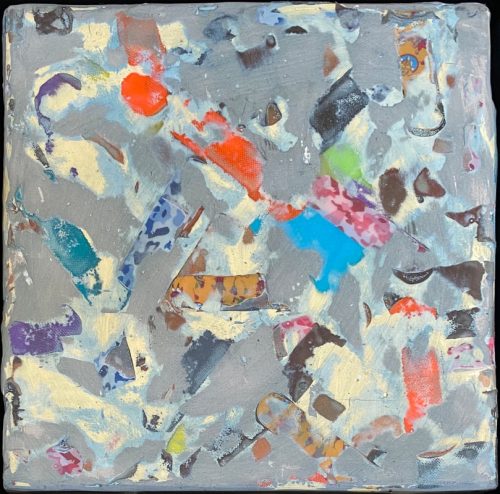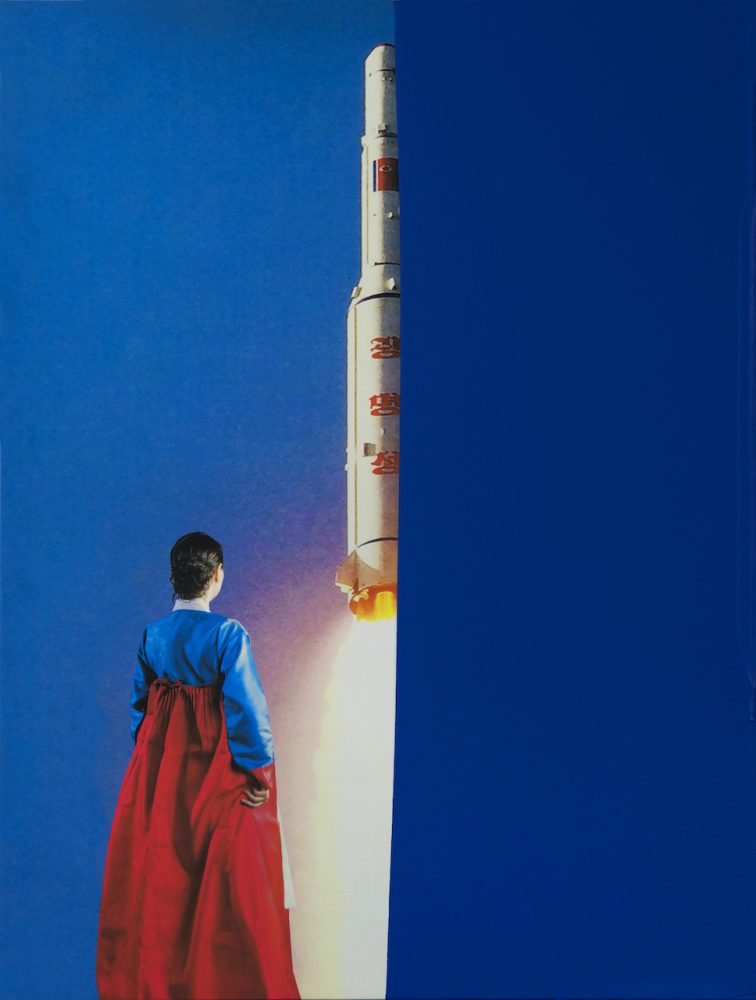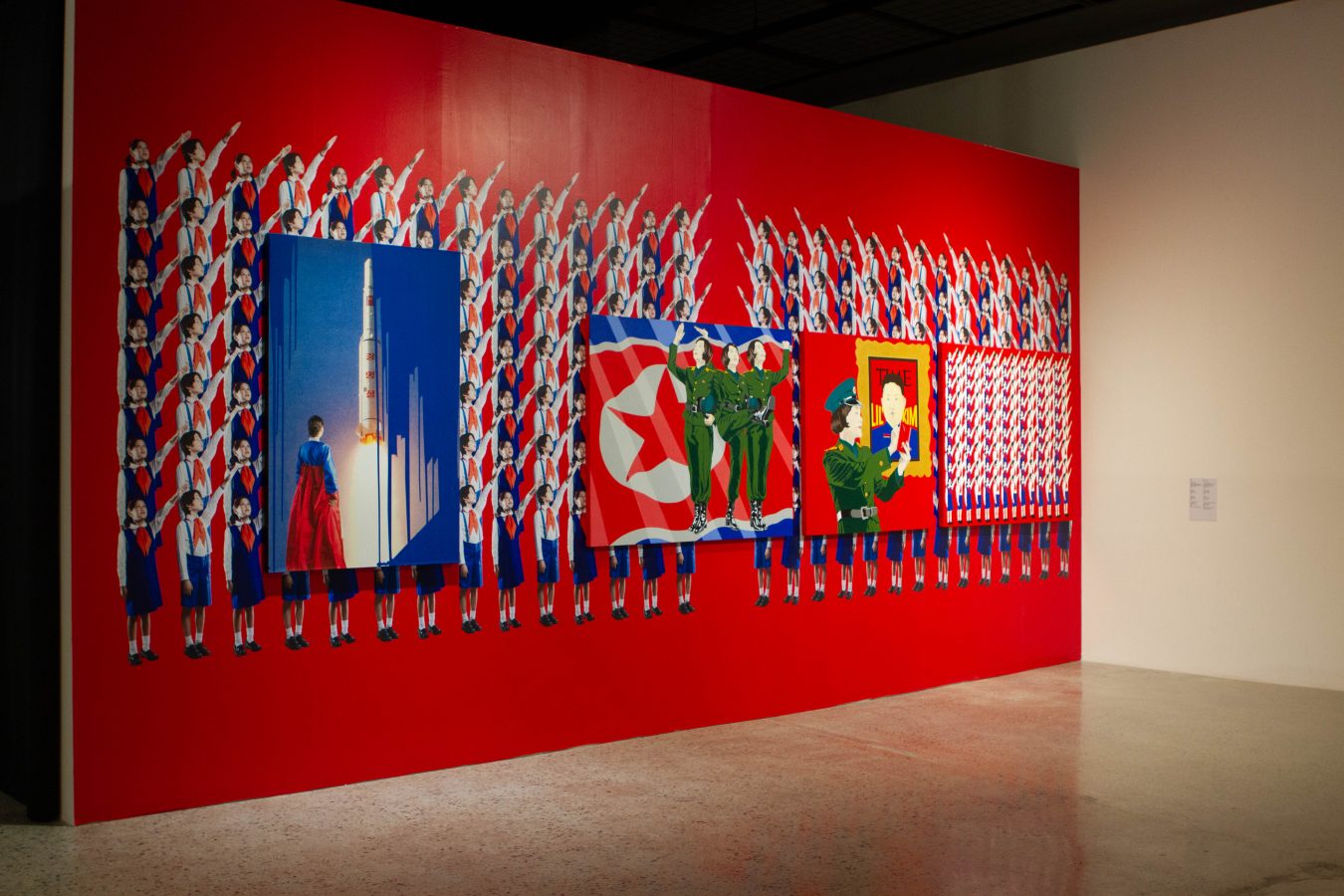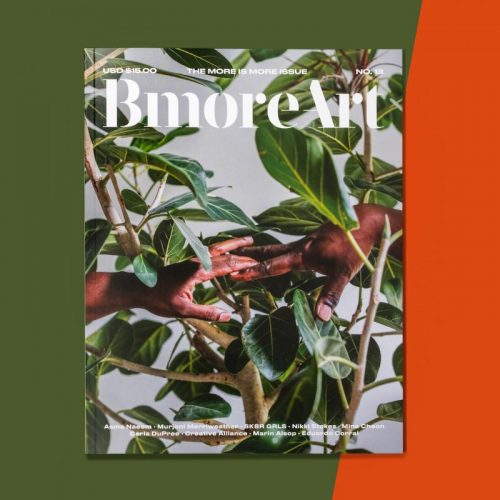Ten thousand individually wrapped Chocopies lay across the gallery floor in an overwhelming but neat configuration. Like Felix Gonzalez-Torres, artist Mina Cheon accumulated a vast array of edible treats and made them freely available to the public, but this is where the similarity ends. Eat Chocopie Together, 2014, installed that year at New York’s Ethan Cohen Gallery, was intended to visualize a harmonious future, rather than mourning the loss of a loved one. For those unfamiliar with the Chocopie, it’s a marshmallow-filled cookie dipped in chocolate made by the South Korean confectionery company Orion—essentially the Twinkie of South Korea. They’re so beloved on both sides of the DMZ that they are a popular item on the North Korean black market.
“When I first brought the Chocopie into the gallery, it was to have people understand that there is communication and love between North and South Korean people,” says Cheon. “This is so different from the existing narratives in American politics and media. This piece is about a shared belief in unification, and part of the activism that is ongoing in Korea.” Cheon explains that the Chocopie is a common item sent by balloon and other means from South to North in care packages. “Tasting this South Korean cookie is one way for North Korean people to realize that something exists outside their government regime and the restricted messaging they hear,” she says.
For Cheon, a Korean-born artist based in Baltimore, the Chocopie is a cultural symbol for inter-Korean peace and diplomacy, the focus of her multidisciplinary arts career which includes paintings, sculpture, video, installation, and performance. Cheon manifested the piece again, with 100,000 Chocopies in a massive installation at the Museum of Contemporary Art Busan for the 2018 Busan Biennial, Divided We Stand (curated by Jörg Heiser and Christina Ricupero), where South Korean President Moon Jae-in and First Lady Kim Jung-sook were among those who ate Chocopies. In this piece and many others, Cheon invites audiences to share in her aspirations for Korean reunification and to consider food as art, healing, and a bridge towards understanding.
Cheon’s practice is rooted in the tradition of activism and protest central to the history of modern Korea. Cheon speaks often about the transgenerational trauma and legacy of Yu Gwan-sun, a young woman who protested Japan’s occupation of Korea after the Russo-Japanese War in 1905, which ended in two separate Koreas. In 1920, at the age of seventeen, Yu was martyred for the cause of Korean independence. Just as Yu never experienced a free Korea, Cheon has never known a unified one.













